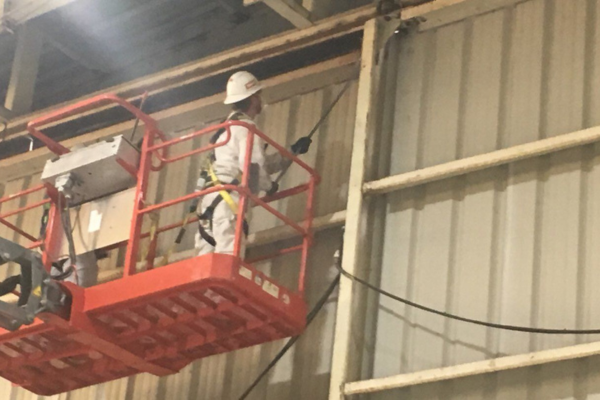 Decorating with stripes is a great way to add dimension, depth and elegance to your rooms, while giving your interior that extravagant “decorator” touch. Today, we’re going to share an easy step-by-step guide on how to paint wall stripes and achieve interior design perfection.
Decorating with stripes is a great way to add dimension, depth and elegance to your rooms, while giving your interior that extravagant “decorator” touch. Today, we’re going to share an easy step-by-step guide on how to paint wall stripes and achieve interior design perfection.
Step 1: Pick the right pattern and colors.
Before you start choosing a stripe pattern, consider the room size. As a general rule, the smaller the room, the thinner the stripes should be. Also, vertical stripes work best in a small room because they can make it appear taller. After deciding between a vertical, horizontal or diagonal stripe pattern, you can create more visual interest by mixing stripes of different widths, ranging from 3 to 15 inches. In addition, you can paint wall stripes in varying colors. When picking paint colors, don’t forget to select the base shade, which will dominate the space.
Tip: To create a nice contrast in a small room, interlay lighter colors, such as cream, soft olive and light peach, with darker colors like medium taupe; in a large area, you can opt for a bolder color palette, including navy, fire engine red and white.
Step 2: Prepare your walls.
After you choose the stripe pattern and colors, and decide whether you’ll paint stripes on one accent wall or throughout the entire room, it’s time to perform a thorough surface preparation. For walls that are in bad shape, we invite you to read our post, “10 Tips to Preparing Walls for Painting.” If your walls are in good condition, apply a primer, let it dry and then paint the entire surface with the base color.
Tip: Make sure the products you select are compatible and allow them to dry for the recommended time before applying a new coat.
Step 3: Measure, mark and tape off your walls.
Once the base paint is completely dry, lightly mark the top and bottom of each stripe and use a straight level to draw each line in pencil. Then, tape off your stripes with Frog Tape by Shurtape, following the instructions given on the package. To ensure adequate adhesion of the tape to the wall surface, press the tape edges firmly with your fingers.
Tip: To prevent paint from seeping underneath the tape, seal the tape edges with a thin coat of base paint and let it dry properly. Also, marking an “X” or color abbreviations if you use multiple shades in the areas you need to paint will help ensure you follow the established stripe layout.
Step 4: Cut in each stripe.
With a 2-inch wide angled sash brush, paint along the inner edges of the tape, overlapping the tape slightly.
Tip: To prevent paint drips on walls, don’t overload the brush; also, run the brush lightly, back and forth several times for an even coat.
Step 5: Paint wall stripes.
Using a small roller, paint each stripe with your chosen color. After painting a stripe, remove the tape, angling away from the freshly painted area.
Tip: If your stripes are lighter than the base color, apply two coats of paint to ensure good coverage.
Going amazingly well with solids, other geometrical patterns, florals and even complex murals, stripes are a fun and relatively easy way to personalize your space.
If you’re not ready to take on a DIY painting project, our experienced painters have extensive knowledge, unique skills and expert craftsmanship to create sheer perfection and exceed your expectations. Hire our dedicated team of professionals by calling us today at (904)-641-4800, and you’ll end up with a beautifully painted interior in no time.






